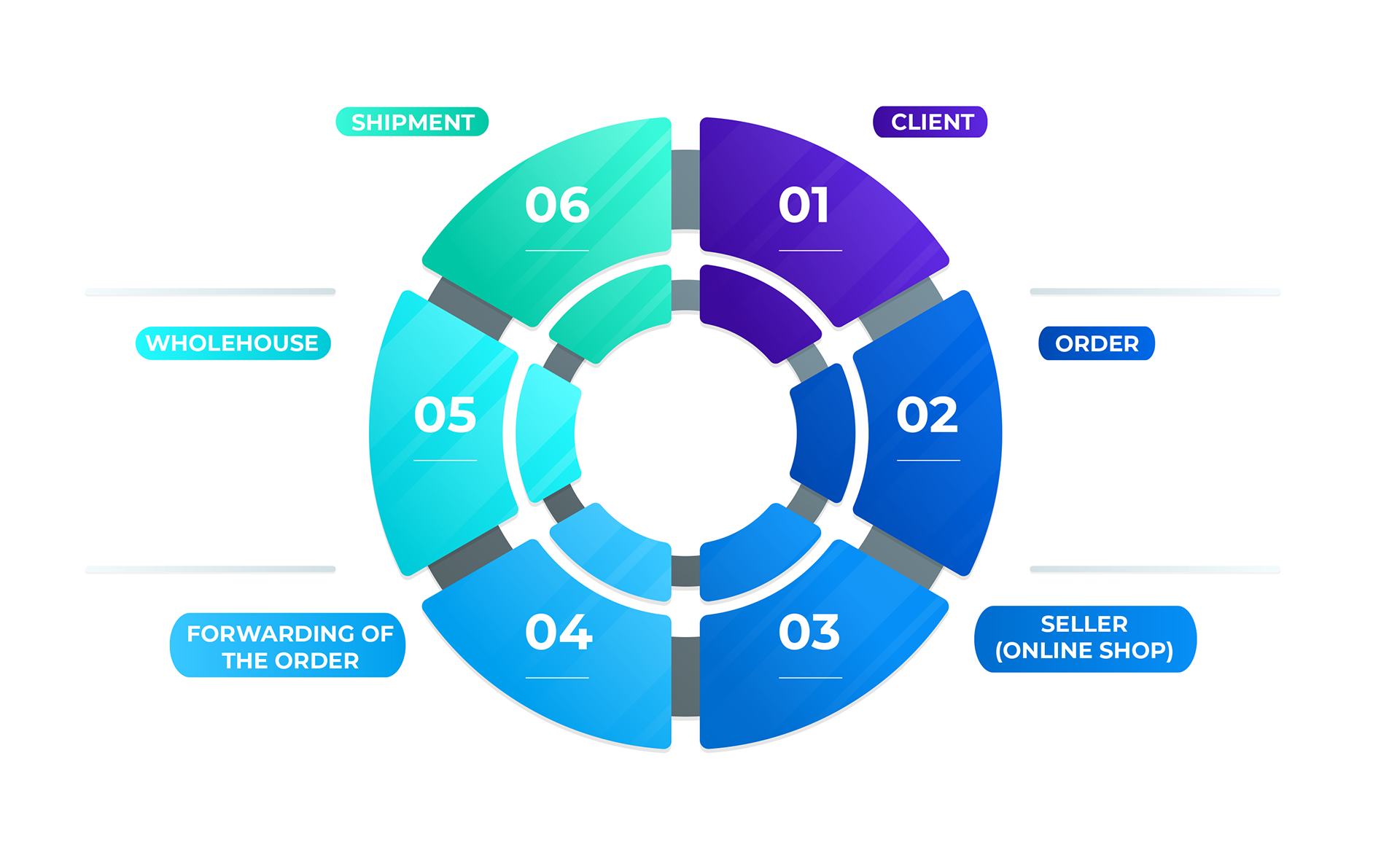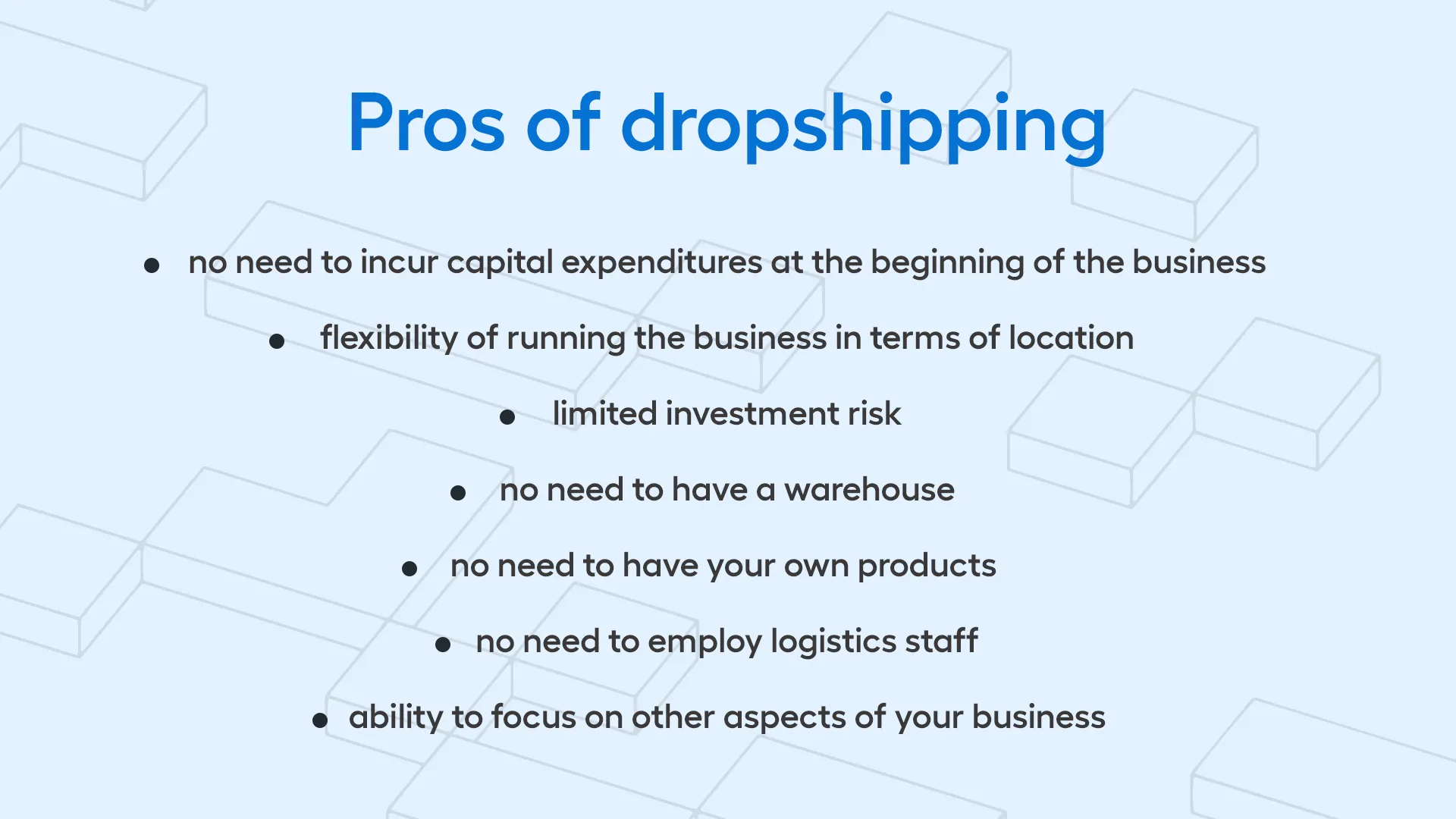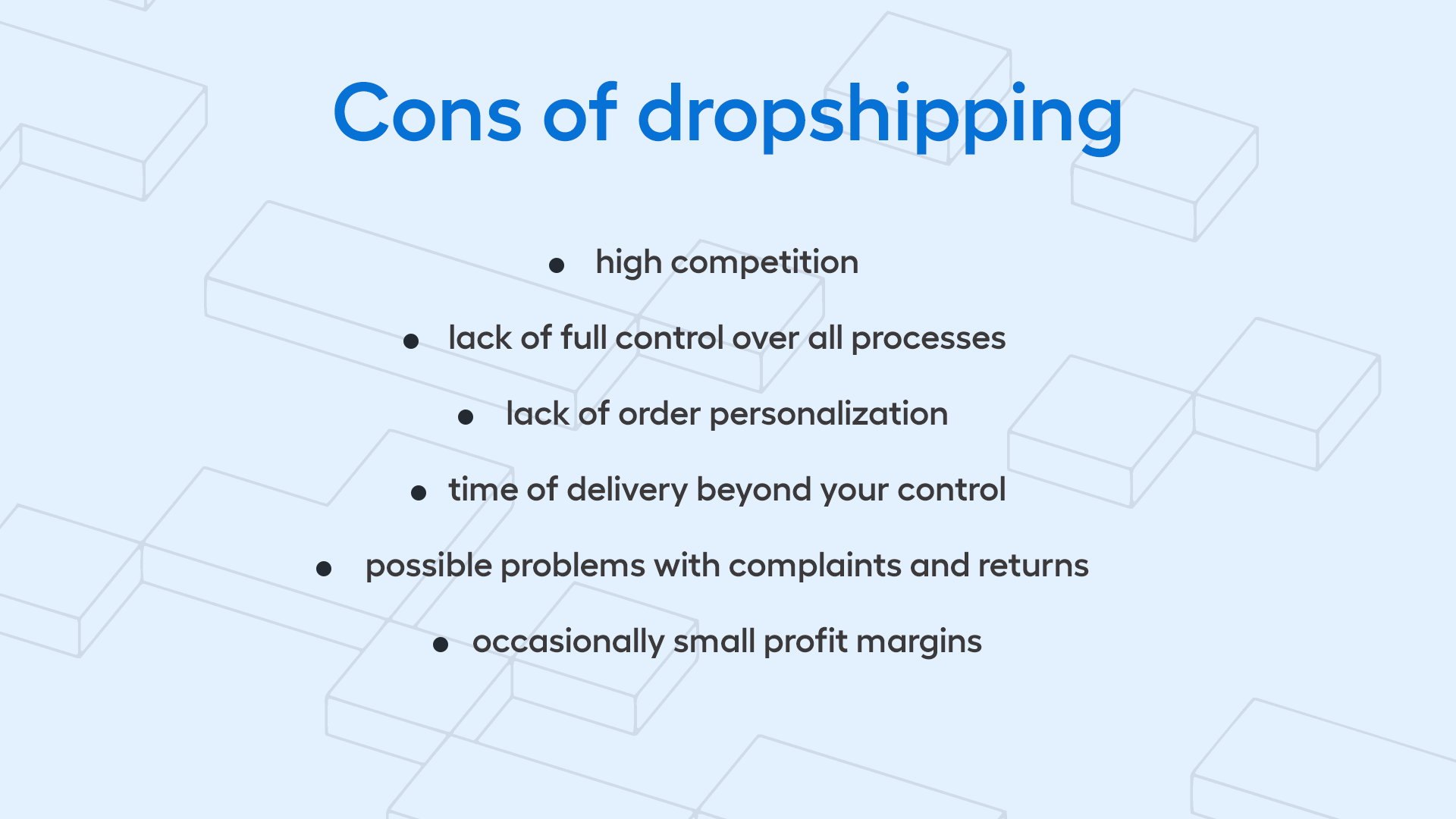The possibility of running a business without having your products and warehouse, and without having a large initial capital - dropshipping is a logistics model that allows you to set up an online store even with such limitations! It will be perfect for people who dream of their own business in the world of eCommerce, but lack the necessary financial resources, want to reduce risk as much as possible, or prefer to take advantage of the opportunity to offer a diverse range of products rather than create their own.
Dropshipping - where did it come from?
Dropshipping developed in the 1950s in the United States as a response to rising logistics costs. The name derives from the phrase "drop shippees", which should be understood as the omission of one of the logistical processes - shipping from the warehouse to the store. When eCommerce started to develop, Amazon was the first to offer dropshipping services, followed by other companies around the world. So it should be definitely emphasized - because this issue raises doubts among some - that dropshipping is fully legal, and its popularity may grow.

How does dropshipping work?
Don't have physical products, don't need your own website? Completely wrong assumption - dropshipping requires you to have an online store where customers can place orders for the products you offer. When an order is received into the system, the seller (or the automated system they use, if they have one) passes the order to the wholesaler, whose job it is to deliver the goods to the end customer. Thus, the wholesaler takes the order, confirms the availability of the product, issues an invoice to the seller (not to the customer) and takes care of the completion and packaging of the order, and then sends it to the address specified by the e-shop user.
What does this mean for you as an e-business owner? First of all, you do not need to own and store goods. What is more, in this model the logistical issues are completely on the side of the wholesaler, so you can shift your capacities to sales and marketing activities.
Who pays for what?
When you think about this specific business model of dropshipping, you definitely wonder about the division of responsibilities and costs. You as a seller are in charge of driving sales with the help of various marketing activities. Thus, your costs are not only the maintenance of the sales platform or the costs of running a business, but also the expenses incurred on all advertising actions (especially paid Ads campaigns). However, the most important cost is the purchase of goods at wholesale price. As a seller, you make a profit on the difference between the price you offer and the price at which you bought the goods at wholesale (the so-called margin).
It is the wholesaler's responsibility to create the products and ship them to customers on behalf of the sellers. This means that the wholesaler - not you - bears all the costs associated with warehousing, packaging, and shipping. The shipping costs themselves are usually borne by the customer - you add the amount to the order given to the wholesaler.
Dropshipping - how to start?
Starting a dropshipping e-business requires you to take just a few steps, which we discuss below.
1. Decide what goods you want to sell
It is best to choose products that you are interested in or that you know well - a good orientation in a particular industry will make it easier for you to start reaching out to customers. It's also worth knowing what consumers are interested in and what the market trends are so that you can choose products that have a high potential to sell. Think about specializing in a particular direction or choosing products that are hard to find to minimize the risk of competition.
2. Select a distributor
When deciding which wholesaler to use, you need to consider several important aspects, trying to choose the best possible option. Important for you will be i.a. shipping costs and additional costs (e.g. for providing product descriptions and photos) offered by a wholesale company, offered forms of delivery (every customer will pay attention to them), method of settlement with the seller, the possibility of automatic updates of stock levels and products availability, return policy or complaint handling. These are just the basic questions you should know the answers to before deciding if you want to be sure of making a choice that will ensure your satisfaction.
3. Sign a contract with a wholesaler
Properly securing the rights of both parties and setting out their obligations is the basis of good cooperation. For this reason, you must ensure that the service agreement you sign covers all the important elements of cooperation (procedures, payments, costs, and delivery dates, division of responsibility, rights, and obligations of the seller and the wholesaler, and the relationship of both entities to the end customer). This is the only way to avoid unnecessary misunderstandings that may always arise during cooperation.
4. Design an e-store
Do it yourself or outsource the work to a freelance programmer or software house. When designing an online store, you need to remember to take care of the integration with the wholesaler who will fulfill your orders, as well as providing all the other functionality you will need.
5. Add products to your store and start selling
Can dropshipping be successful?
The simplicity of starting an e-business with limited investment risk is why the popularity of dropshipping continues to grow. Some are even tempted to say that it is a global eCommerce trend that will continue to interest both younger and older businessmen. Dropshipping can be considered either as a main or secondary source of daily revenue, making it an option to operate under this model at any time. What's more, you can be anywhere in the world - you can be in the other hemisphere and handle your orders with just a computer, without worrying about what is happening in Poland.
However, this is not a goose that lays golden eggs - it is not enough to just set up an online store, establish cooperation with a wholesaler and wait for orders to start flowing in on their own. A low threshold for entry into dropshipping means a lot of competition, among which you need to stand out. Financial resources that would normally be spent on the production, storage, and distribution of goods should be shifted to sales and marketing activities.

Why is dropshipping a bad business idea?
Just like any other model of selling via the Internet, dropshipping has not only advantages but also disadvantages. The main cons are mainly because as a seller you do not have access to the goods and you are not able to control every process that takes place. You also have to be prepared for dependence on wholesalers in terms of delivery (which may be longer than you would like), the packaging and shipping of goods, or possible rules of cooperation. What is more, in case of any problems (e.g. delay, mistake in address), the consequences will be borne by you as the e-shop owner.
It may also happen that a client will place an order for a given product, and after contacting the wholesaler, it turns out that the product is out of stock. In order to avoid such unnecessary problems, it is worth staying in constant contact with the wholesaler or decide to implement a system that ensures automation of notifications about stock levels and availability of goods.
With dropshipping, you also don't have any options to personalize your packages, which makes for limited actions that help you stand out in the eyes of your customer.

Check if dropshipping is the model for you
In times when eCommerce seems to be a cash cow, it is worth considering any business model before making a final decision. Dropshipping is an ideal solution for people who are not able to bear the high investment costs associated with the establishment of an e-business. What's more, it allows you to start selling on the Internet in a fast and easy way. Maybe this is the option just for you?
If you think that this solution is right for you, don't wait any longer - at Advox Studio we have been implementing a platform for one of the largest distributors of dietary supplements in Europe, so we know exactly what the requirements are for cooperation in the dropshipping model. For our customers interested in running their e-business this way we create both online stores, which allow you to manually collect orders and forward them to the supplier, and platforms connected via API with a wholesaler - ensuring automation of processes.
Interested? Come with us and the dropshipping model into the world of eCommerce!



